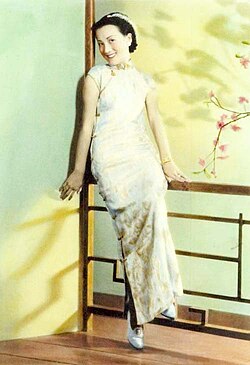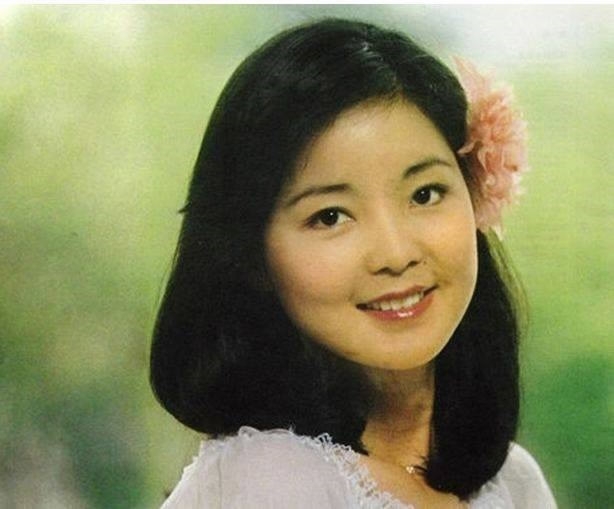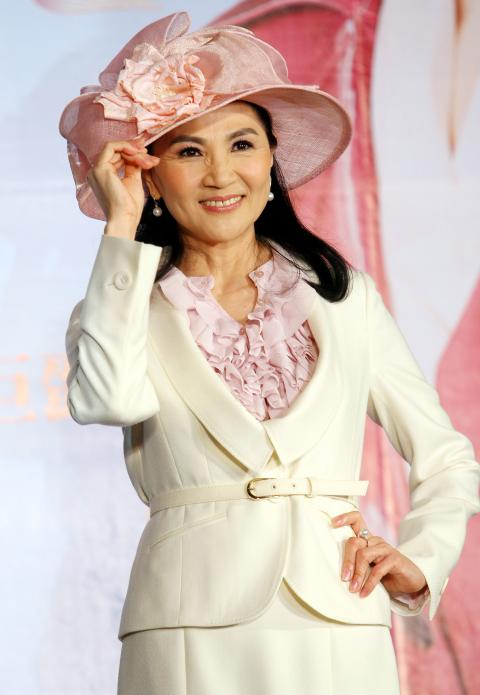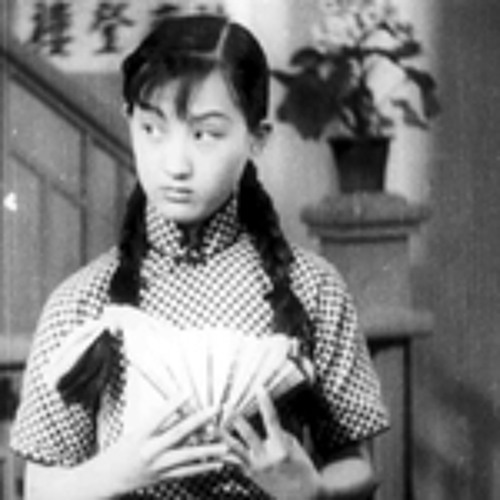I chose to write about this particular song as an introduction for someone new to mid-20th century Chinese music. Because it is such a great example of how music throughout the period maintains heritage while also transforming to meet modern tastes. It also introduces some of the most famous artists of the time. A good way to get a sense of the landscape before, during, and after the cultural revolution.
Zhou Xuan 周璇 1930s

Zhou Xuan was one of the biggest stars in China back in the 1930s and 40s. People absolutely loved her—she had this beautiful, soft voice that earned her the nickname “Golden Voice,” and she acted in tons of popular movies too. One of her most famous roles was in Street Angel, and that really helped make her a household name. She recorded over 200 songs and starred in more than 40 films, which is pretty incredible. Zhou Xuan wasn’t just popular—she was the face of Chinese pop culture at the time, and even now, people still talk about her as one of the greats.
There are several important aspects to note about Zhou Xuan’s vocal style. One is her youthful, slightly nasal tone, which was characteristic of the Shidaiqu genre—a popular fusion of traditional Chinese operatic influences and Western jazz that emerged in 1930s Shanghai. While her singing reflects some stylistic elements inherited from earlier Chinese opera traditions, it primarily aligns with the musical standards of that era. For modern audiences accustomed to contemporary vocal styles, her voice can take some getting used to.
Here is an example of a neo-traditional style that seeks to emulate the Ming-era operatic style for a contemporary audience. Incredibly from 1987. Of course a soundtrack for “Dream of Red Chambers”. An immense cultural touchstone for all generations. Perhaps one of the world’s most popular, reprinted, and studied pieces of literature, ever. Although, outside of Asia is practically not known at all. Mao even claimed to have red it three times. Which is impressive considering it would have been written in classical Chinese. Even more than Zhou Xuan, Dream of Red Chambers is about Confucian households. Albeit a fantasy story. Again, some pieces of culture the PRC was more than willing to adopt from much earlier periods. Even Daoism to some extent…but, I digress.
For the concerned listener, here is an even more accurate example. But like I said, I chose a more neo-traditional one. To spare people without the taste for this particular style. Which can be quite jarring and harsh.
Another important aspect is the instruments used in Zhou Xuan’s recordings. Some of them are unique to the period, such as the sanxian—a three-stringed lute that carries the bass line. The sanxian is one of my favorite traditional instruments, and its construction and sound could easily fill an entire post on its own. In her recordings, you can hear the sanxian alongside other traditional folk instruments like wood blocks and sometimes even the guqin, a classical Chinese zither. These instruments have roots in Qing-era music, which began a gradual decline around the 1920s.
Challenge: Flex your new vintage Chinese music skills. Go back to the first song and see if you can hear the sanxian…
By the time Zhou Xuan was singing in the late 1930s, these traditional instruments were still widely used in popular and folk music. However, during World War II, there was a noticeable shift toward Western instruments such as the piano, brass horns, and violins. This blending of Eastern and Western sounds helped define the golden age of the “Shanghai Diva” era in the 1940’s. Love Without end is a good example. A movie in the 60s captures the aesthetic well.
And of course we can’t talk about Shanghai Divas without mentioning Tsai Qin. Or should I say, the Tsai Chins?
Tsai Chin 周採芹 1960s
Of course Tsai Chin, from Taiwan, is not to be confused with Tsai Chin, from Hong Kong. I am protecting you from literally minutes of Google searching when one day you hear Tsai Chin singing in Cantonese and you think something is amiss. Because you would be correct. Tsai Chin is one of the few Chinese singers to reach a Western audience in her contemporary time. Because of her singing the opening (The Ding Dong Song) to the movie The Life of Suzie Wong. A movie that is fun, but to me is a little uncomfortable. It panders too much to an imagined World War II Asia from a Western (US Navy) point of view. To the point I don’t feel the plot justifies through character development, etc. The aesthetics are very cool though. I would love to live in 60s Hong Kong. With a golden lamp in my living room and plenty of ashtrays. Still a good movie, and a minor cultural touchstone in the West. Just a little gross.
Quick side note: The Ding Dong Song actually became popular in south eastern china in the 1960’s. The actual translation being The Second Spring. As a euphemism for a second marriage. Which would have been taboo at the time. Absolutely not like Chuck Berry’s Ding A Ling Song. The dings and dongs refer to wedding bells. Here is the Chinese market version.
Cultural Revolution 1960s
Zhou Xuan’s work was so prolific it was preserved and integrated into the PRC’s cultural landscape. Here is a cover from 1965. Granted, it is from a Hong Kong record label, where music progressed a lot more freely than Beijing. But still. Totally uncensored, and allowed.
Compare that to the northeastern 60’s era folk music. Which is a large topic for another day. I chose this particular song because I feel it fits a genre of “pink music” obviously Maoist but not explicitly so in structure or lyric. New folk music was allowed and encouraged, within bounds. While the CCP officially embraced Zhou Xuan as part of Chinese cultural heritage, it distanced itself from Qing-era traditions and Confucian influences, which creates an ironic tension in how her legacy was treated. She is an excellent example of the conflicted nature of the revolution. You can’t let something like her go.
Teresa Teng 鄧麗君 1970-90s

She is often described as East Asia’s Elvis—a legendary figure whose influence spans multiple countries and decades. Although she is Taiwanese, her popularity extends far beyond Taiwan itself, reaching audiences in Japan, Thailand, Singapore, and even the People’s Republic of China, where she is highly regarded. Her music often features traditional Chinese instruments like the guzheng (a plucked zither), but it is blended with modern styles to reflect the evolving popular music tastes of the 1980s and beyond.
Particularly in southern regions such as Taiwan, Shanghai, Japan, and Singapore, popular music developed rapidly throughout the late 20th century, increasingly incorporating Western musical elements. This created a unique fusion that stood somewhat apart from the mainland Chinese music scene, which, due to political and cultural factors, progressed more conservatively and at a slower pace in embracing Western pop influences.
Fong Feifei 鳯飛飛 1970-90s

Feng Feifei is often hailed as one of Mandopop’s most iconic pop divas, earning a massive following across East Asia—including Taiwan, Hong Kong, Japan, and Southeast Asia. Known for her powerful yet emotive voice, Feng blends traditional Chinese musical elements with contemporary pop and ballad styles, creating a sound that resonates deeply with a wide audience. Like many artists from Taiwan and southern China, her music incorporates instruments such as the guzheng and subtle traditional touches, but with a distinctly modern arrangement suited to the tastes of the 1980s and 1990s.
Her career highlights the rapid evolution of pop music in regions like Taiwan and Hong Kong, where Western influences—such as jazz, rock, and electronic music—were embraced earlier and more extensively than in mainland China at the time. This fusion helped define the vibrant music scene of the era and solidified Feng Feifei’s place as a beloved figure in the golden age of Mandarin pop.
Tsai Chin 蔡琴 1980’s
She’s a legendary Taiwanese singer whose deep, velvety voice has been charming audiences since the late ’70s. Her songs—like “The Forgotten Time” (被遗忘的时光)—carry a nostalgic vibe that somehow never gets old. Whether it’s her soulful ballads or jazzy lounge-style tracks, Tsai Chin brings this effortless elegance that just pulls you in. She’s also known for her expressive live performances and enduring influence across generations in the Chinese-speaking world. Total icon.
Conclusion
The journey of Chinese popular music through the mid-20th century and beyond is a fascinating story of cultural resilience, adaptation, and fusion. Artists like Zhou Xuan, Teresa Teng, and Feng Feifei not only carried forward traditional musical heritage but also embraced new influences, blending East and West in ways that reflected their times and regions. From the operatic roots and folk instruments of the 1930s Shanghai scene to the modern pop ballads of Taiwan and Hong Kong in the 1980s and 90s, this evolving soundscape captures the complex history of a rapidly changing society.
Each artist represents a different chapter in this musical tapestry: Zhou Xuan as the golden-voiced pioneer of early Chinese pop culture; Teresa Teng as the beloved “East Asia’s Elvis,” whose music bridged political and cultural divides; and Feng Feifei as a powerful voice of Mandopop’s golden age, blending tradition with contemporary styles. Together, their legacies remind us how music can preserve heritage while also inspiring innovation and connection across generations and borders.
Whether you’re new to this era or revisiting it, their songs offer a rich window into the heart of Chinese and East Asian popular music history — a vibrant mix of the old and new that continues to influence artists today.

Leave a Reply